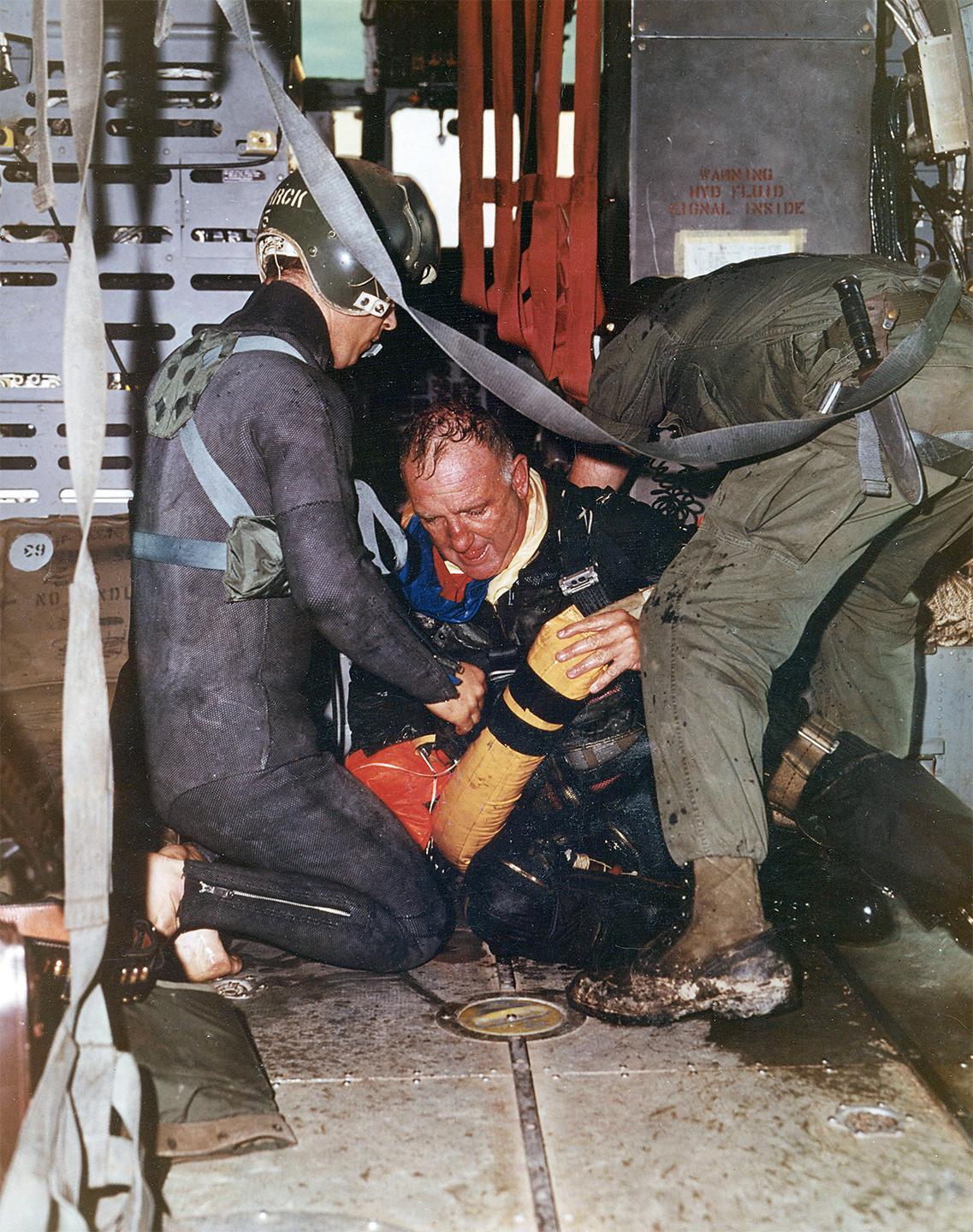Combat Search and Rescue (CSAR) came into its own during the Vietnam War. Specially trained aircrew became extremely adept at bring back pilots and personnel from behind enemy lines, often at the risk of their own. During the war these crews saved 4,100 people — 2,780 under combat conditions.
By the end of the war U.S. Air Force pararescuemen were awarded 98 Silver Stars, with 10 of the 19 Air Force Crosses awarded to pararescuemen. One of them, awarded to A1C William Pitsenbarger was later upgraded to the Medal of Honor.
On Dec. 17, 1967, an F-4C Phantom II, flown by Col. Devol C. Brett was hit by anti-aircraft fire near Vinh Linh. Brett and his backseater, Lt. Myron F. Smith ejected and came down in the South China Sea. Tragically, Lt. Smith
was killed, while Col. Brett survived the ejection and was able to inflate his small life raft. An HH-3 “Jolly Green Giant” from the 37th Aerospace Rescue and Recovery Squadron was sent to the scene and picked up Col. Brett only 10 minutes after he had landed in the water.
This photo shows the moment the Phantom pilot was brought aboard the hovering helicopter. In the wet suit on the left, pararescueman Sgt. Charles P. Vogeley helps Brett out of a rescue harness along with helicopter crewman Sgt. Dennis Richardson (right).
A veteran of over 100 missions during the Korean War, Col. Brett flew another 100 missions over Vietnam. He retired in 1978 as a Lt. Gen. and the Commander of Allied Air Forces in Southern Europe.
historynet magazines
Our 9 best-selling history titles feature in-depth storytelling and iconic imagery to engage and inform on the people, the wars, and the events that shaped America and the world.


